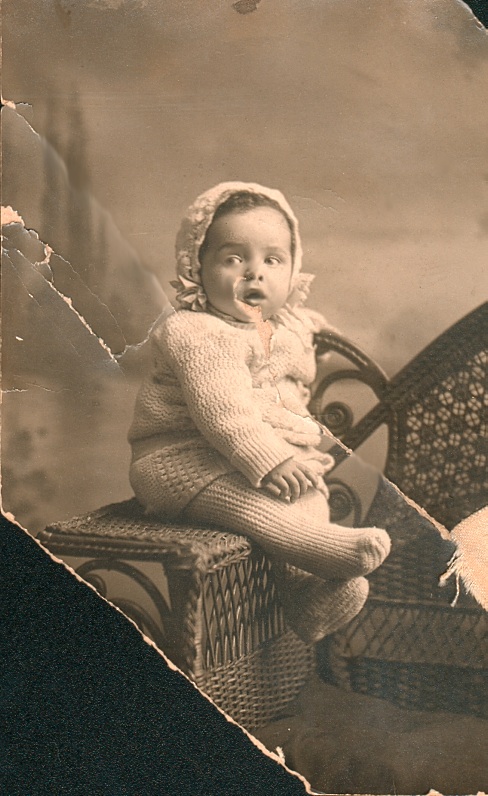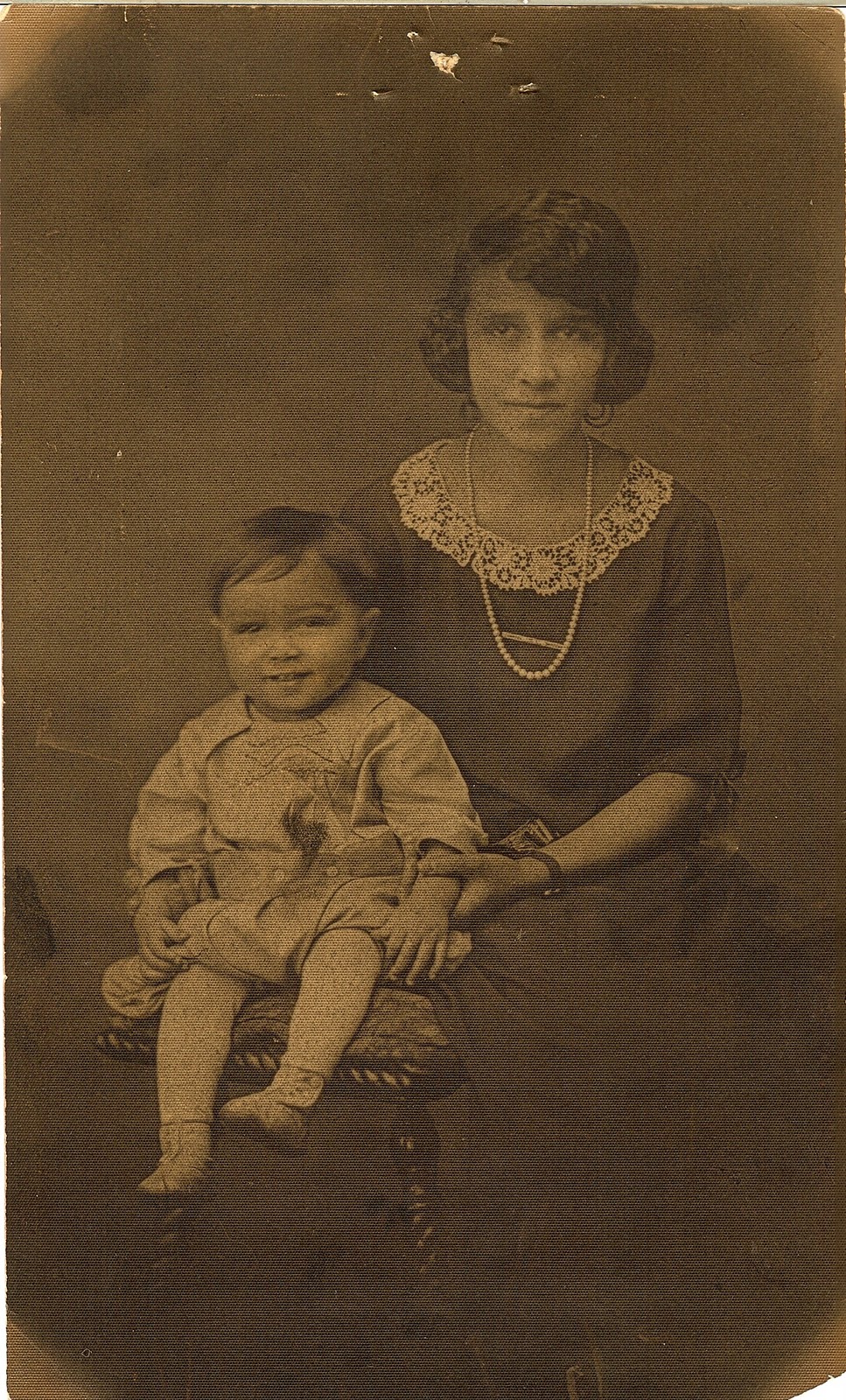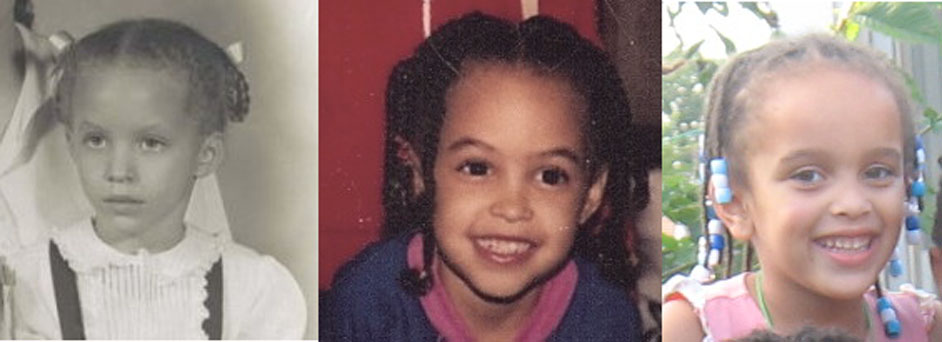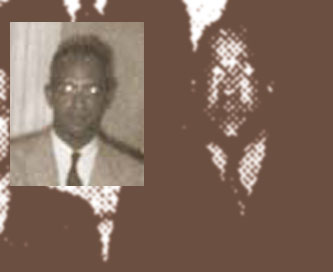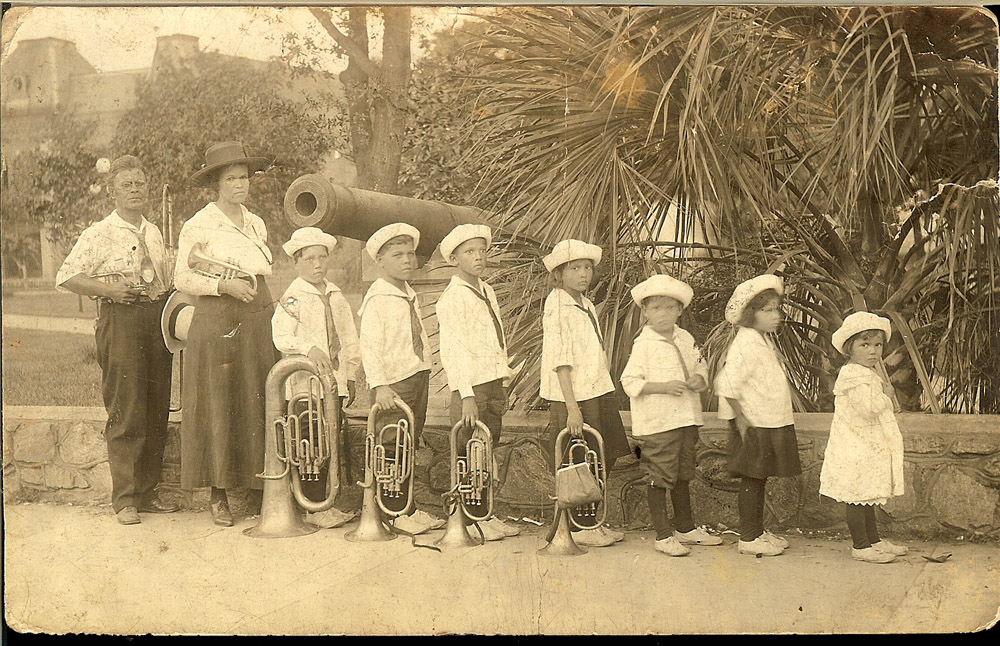
Elections Past
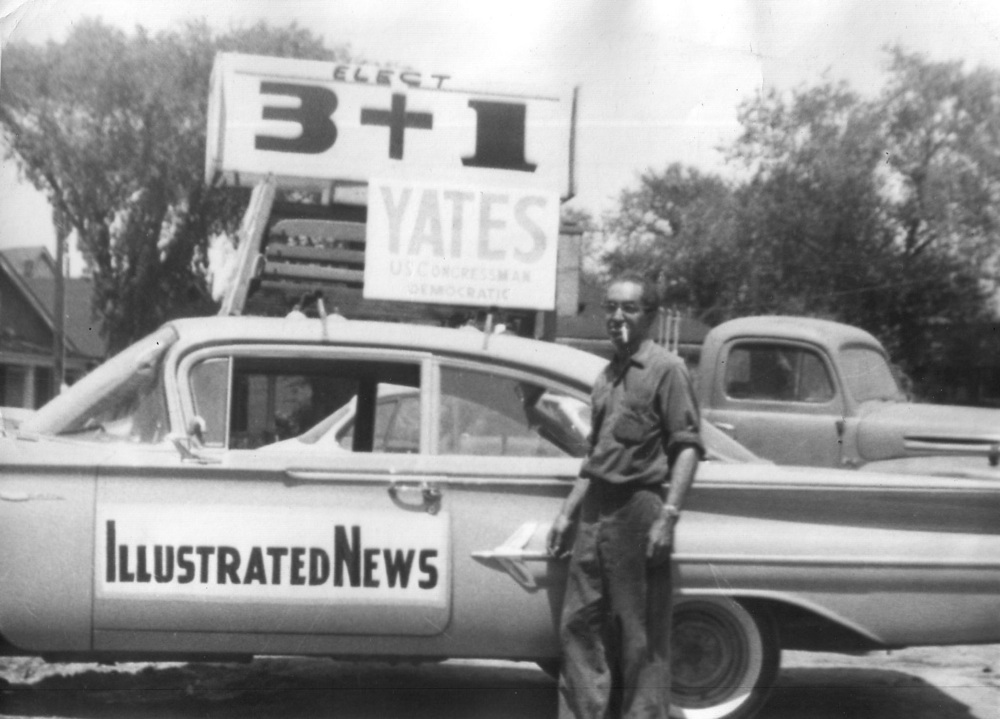 My uncle Hugh Cleage standing by the sound car he rigged up for an election in 1962 Detroit. My sister, Aunt Gladys and I spent hours in that car riding through our community.
My uncle Hugh Cleage standing by the sound car he rigged up for an election in 1962 Detroit. My sister, Aunt Gladys and I spent hours in that car riding through our community.
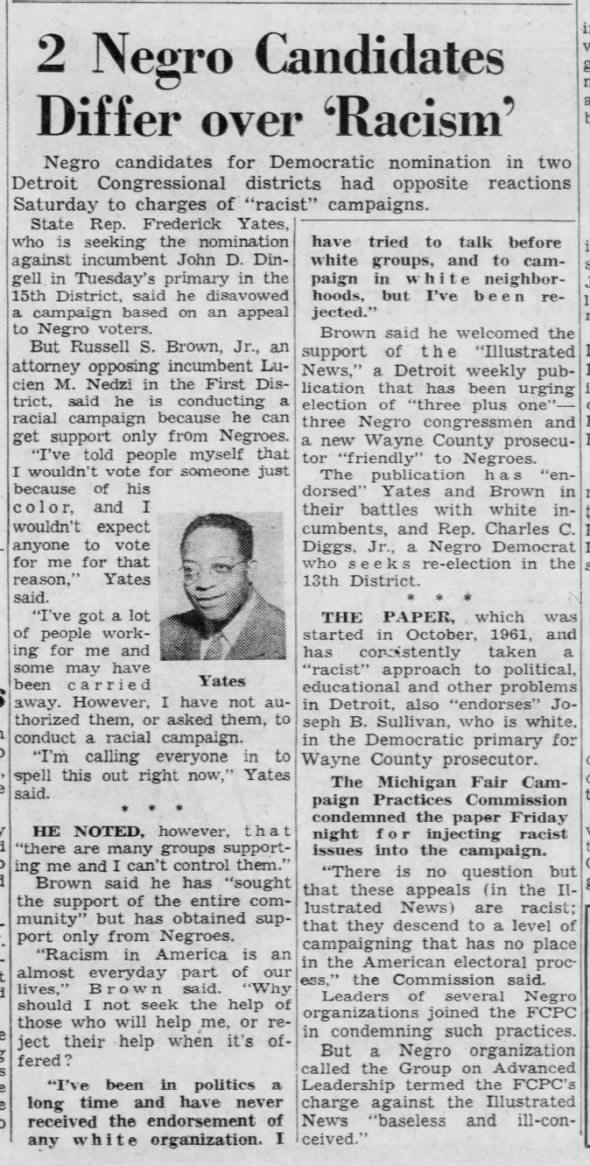 yates for congress, disavows illustrated news support 05 Aug 1962, Sun Detroit Free Press (Detroit, Michigan) Newspapers.com
yates for congress, disavows illustrated news support 05 Aug 1962, Sun Detroit Free Press (Detroit, Michigan) Newspapers.com
“Good-bye Jim” by James Whitcomb Riley
I have been thinking about this poem often lately, don’t know why. I have the book that used to belong to my uncle Henry and before him, to my grandparents. I remember reading it growing up. My husband is called Jim and I sometimes say “Good bye Jim, take care of yourself!” when he’s leaving. I copied this from here, although I could have scanned it in.
“Good-bye Jim”
by James Whitcomb Riley
Old man never had much to say-
‘Ceptin’ to Jim,-
And Jim was the wildest boy he had-
And the old man jes’ wrapped up in him!
Never heerd him speak but once
Er twice in my life, and first time was
When the army broke out, and Jim he went,
The old man backin’ him, fer three months;









Just Tell The Men – A short story by Henry W. Cleage
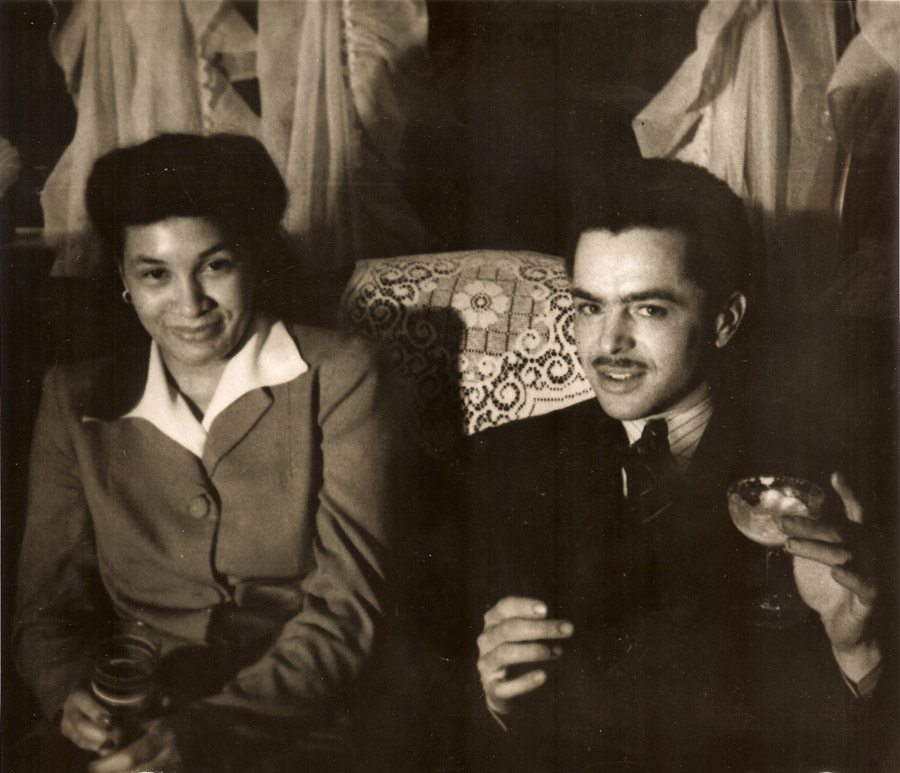
“After all,” said George, waving his drink around impressively, “a rolling stone is worth two bushes.” He finished his drink and swaggered to the couch and sat down.
This bit of logic gave our little party pause. For who could deny it?
George and his wife, Vel, Louis and his wife, Melba, and I and my wife, Barbara, and Paul and his girl, Gloria, were gathered together, as was our custom on Saturday nights at George’s house. It had started out like an enjoyable evening. Plenty of liquor and good friends. But then somehow the conversation wiggled around to the girls’ favorite topic. To wit: Why Gloria should not marry Paul. Of course we fellows had a position to defend and we argued, to wit: vice versa.
You see the argument wasn’t really about Gloria and Paul. We all knew they would marry as soon as she graduated from Wayne U. this coming June. The girls just used this discussion as an excuse to get their licks in concerning our husbandly weaknesses.
Like what Barbara said, “How can she marry him?” she shrieked, “always buying boats and fishing poles and shotguns and going away for two months vacations. He’ll never save any money.”
This boat business was their latest and most intense beef. We four fellows had bought a small cabin cruiser together. Everything was fine when we all dressed up in yachting caps and cruised along the Lake Shore Drive and around the Belle Isle Bridge. But when we started going up into the lakes fishing, the girls suddenly tired of the sport. Besides no one could recognize them from the bridge anyway.
And so as the liquor flowed, our little party grew tense. Just like the last weeks’ party and the one before that. Everyone was swelling up. Faces were getting that strained look. Cords were standing out in the girls’ necks as they screamed their illogical accusations. The more they drank, the louder and higher they shouted and also vice versa. They weren’t the sweet little girls we used to know.
We men, I realized, were nowhere. We had logic, truth and compassion on our side. The girls had volume. And what availeth logic against a woman’s hard breathing, shrill and rasping emotional tantrum? I was drinking to escape when George dropped his atom bomb amongest them. You could almost hear the air escaping from their sails.
“I repeat,” said George, pressing home his point, “A rolling stone is worth two bushes.” He blew out a cloud of cigarette smoke. “Even with moss on them,” he added.
The girls looked dazed. Gloria sniffed her drink. She wasn’t married yet.
“Umm,” said Melba pointedly.
Ah,” said Barbara shrewdly.
“Huh?” said Paul. He wasn’t married yet either.
“Of course, as you say,” George continued thoughtfully, “it’s better to have loved and lost, than never the twain shall meet.” He poured himself a drink and I noticed that his hand was shaking. It was strong medicine that he was using, but the case called for it.
“Yeah,” said I.
“Yeah,” said Louis.
“Huh,” said Paul, he wasn’t married yet.
It was unanswerable logic that George was uttering. This was plain to Louis and me in our condition. Maybe Paul too. However, the girls weren’t quite convinced. Their condition was comparable though.
“That’s silly,” said Vel.
George blanched.
“Yeah,” said Melba.
“Yeah,” said Barbara.
“Yeah,” said Gloria. She wasn’t married yet but she was a woman.
“Silly?” George tried to sound preposterous and failed miserable. He sounded silly.
“Who ever heard of two bushes with moss on them?” asked Vel, looking around for help.
“Yeah,” said Barbara shakily.
“Yeah,” said Melba in a daze.
“Yeah,” said Gloria belligerently, she still wasn’t married yet.
The color was coming back to George’s face. “Have you ever heard of one bush with moss on it?” he asked, raising one (left) eyebrow. It was a stunning question.
Vel was plainly confused. She looked around for help, but the girls were very busy drinking and looking the other way. “Why y-yes,” she stammered.
“Just like I said,” shouted George triumphantly. “What’s sauce for the goose is nine sour grapes in time.”
“Yeah,” said Louis.
“Sour grapes, indeed,” said Barbara fighting a losing battle.
She looked heavily at Melba. Melba looked heavily at Vel, who in turn, looked heavily at Gloria, who in turn looked heavenly. Gloria was single.
They finished their drinks with four gulps and refilled. They hitched themselves closer together. They looked at each other again, this time wild eyed. They had no more to say.
Paul was looking wild eyed too. So we hurried him into the kitchen before he queered the works. We wanted to examine this thing we had discovered, too.
“Sensational,” said Louis, looking admiringly at George, who was leaning against the refrigerator with his hand on his navel, like Napoleon.
Uncanny,” said I, dancing with glee.
“What?” said Paul.
“It will revolutionize men,” said George modestly, looking narrowly into the distance.
“It will revolutionize women,” said Louis in awe.
“It will revolutionize the world,” said Paul who wasn’t married yet.
George held up his hand for silence. “Tell them,” he began scowling with the weight of his message.
“Tell who? Asked Paul.
“Mankind,” shouted George, irked at this ignorance. “Mo,” he retracted, “Just tell the men. Tell them,” he began again, “never to make the mistake of arguing with a woman logically.”
“Hear, hear,” cried Louis and I.
“Hear, hear,” cried Paul, seeing the light.
“For in that direction,” he continued, “madness lies.” He was pacing up and down before us now, filled with the message. “We must talk trash,” he said
“Yes, trash,” he thundered. “Plain, unadulterated trash.” He was winded.
I went to the kitchen table and poured four drinks. With a certain dignity I gave to each his own. We touched glasses.
George spoke. “I firmly believe,” he said firmly, “that we men can be as silly as the next woman.”
“If not sillier,” said Paul. He wasn’t married yet.
We drank.
Naomi’s father, Victor Tulane – Obituary
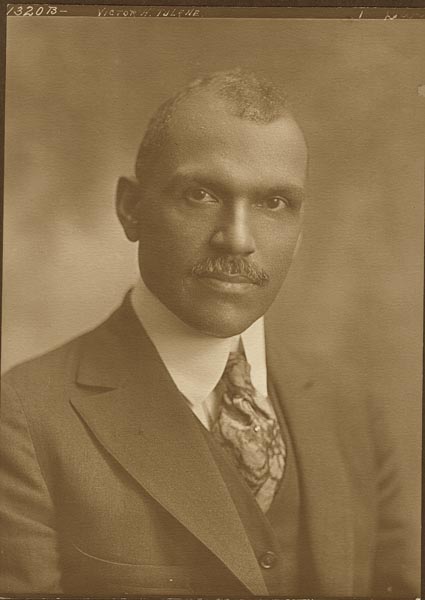

Montgomery, Ala., Jan, 16.
Victor H. Tulane, a leader of his Race here for many years, died at his home, 430 S. Union St., at the age of 57. His rise to affluence, through his own industry and native shrewdness, was little short of remarkable. Prior to his death he owned a mercantile business and operated a real estate agency of considerable scope.
Tulane first came to Montgomery when he was 15 years, old having walked here from Wetumpka, where he was born. His first job was porter in a saloon, but later he opened a store at the corner of High and Ripley Sts. which he operated for about thirty years. He later rented his store and entered the real estate business, and before his death had accumulated a comfortable estate.
For many years Tulane served on the board of trustees of the Tuskegee Institute. He was also chairman of the board of trustees of the Hale infirmary. He was widely known for his generosity and willingness to serve in charitable movement. He was actively connected with the community chest and was one of the first to donate toward the Y.M.C.A. building for white (sic.) persons.
Surviving are his widow, Willie L. Tulane of Montgomery, and his daughter, Naomie Tulane Vincent, New York city. Funeral arrangements will be announced later by the Loveless Undertaking company.
_______________
Transcribed from The Chicago Defender Jan 17, 1931 via ProQuest Historical Newspapers online database.
More about this branch of the family to come. Victor’s wife, Willie Lee Allen Tulane, was one of Eliza’s daughters.
Henry Wadsworth Cleage
Naomi Tulane Vincent and son Hubert
Naomi was the single surviving daughter of Victor and Willie (Allen) Tulane of Montgomery, Alabama. Two daughters died in infancy. She married Dr. Ubert Conrad of New York City on April 28, 1920. The two met while she was accompanying her father on a trip north to promote Ala-Ga syrup. This picture was taken about 1925.
Who Was Born On My Birthday?
The Saturday Night Genealogy Fun challenge this week:
1) Is there a person in your genealogy database that has the same birth date that you do? If so, tell us about him or her – what do you know, and how is s/he related to you?
2) For bonus points, how did you determine this? What feature or process did you use in your software to work this problem out? I think the Calendar feature probably does it, but perhaps you have a trick to make this work outside of the calendar function.
I found three people in my Reunion data base with my birthday.
1. My niece Deignan was born on August 30, 29 years after I was.
2. My step-grandaughter Maya was born on August 30, 58 years after I was.
3. Elizabeth Ferguson was born 22 years before I was and is the wife of my first cousin twice removed husband’s great uncle. In other words, she is not a blood relative but a result of one of my wandering searches.
It took me some time to figure out how to find this information in my REUNION genealogical software, which is why I am posting on Sunday night instead Saturday. I found it by going to my calendar, under LIST, then picking Birth as the event, include ALL PEOPLE, month of AUGUST and then picking LIST. I got a window with all the August birthdays, scrolled down to August 30 and voila, there they were.
Jerome Cleage, the doppleganger’s Second husband – is he related to me?
In a recent post I talked about my grandmother Pearl Reed Cleages singing doppelganger Pearl Holmes Cleage. In this post I will explore the other Pearl’s second husband Jerome Cleage. Was he related to my grandfather Albert Cleage? Both were Cleages, both with roots in McMinn county Tennessee. In the marriage record found on Family Search for Pearl Holmes and Jerome Cleage I found he was born October 20, 1880 in Rhea Springs, Tennessee to Richard and Adeline (Wasson) Cleage. He was married to Pearl on September 23, 1914 in Cleveland, Ohio.
In 1870 there were three Richard Cleages in all of Tennessee, two black and one white. All three were in McMinn County. This was where Samuel Cleage settled in the 1820’s with the slaves he had brought from Virginia and the ones he picked up as payment for building houses all along the way. I noticed when I looked in the book “The Hidden History of McMinn County” by Joe Guy, that the slaves were described as Angolan. I wonder how the author knew that? I will have to write and ask. When Samuel Cleage was killed by one of his overseers the slaves were split between his two sons, Alexander and David. My ancestors came off of Alexander Cleage’s plantation. I don’t know which one Jermone’s people came off of.
Of the three Richards, the white Richard Cleage the great grandson of Samuel and the grandson of Alexander, was nine years old at the time of Jerome’s birth. I disregarded him as a possible father of Jerome. The other two Richards were both sons of Charles Cleages. There were two of them. Charles and Martha’s son was 3 months old in 1870. I don’t think he fathered Jerome at the age of ten. The other Richard was the fifteen year old son of Charles who had no wife ennumerated with him in the 1870 census. Charles did have 8 Cleage children living with him, who I assume were his sons and daughters. Relationships were not specified in the 1870 census. This Richard would be about 25 by the time Jerome was born in 1880. One of this Richard’s younger brothers was named Jerome.
Richard and Adeline Cleage were enumerated in Rhea county in 1880. I found Richard, a hostler (he cared for horses), and his wife Adeline was a cook. They lived in the household of John Abernathy, a physician. They had two children, both born in Texas, two year old John and one year old Emma. Jerome had not been born yet. I was suspicious of the Texas birthplace thinking it might be a transcription error but Texas was listed on all the records I found for them. I wonder how Richard and family ended up there and what they did and why they returned to Tennessee.
I can’t find any of the family in 1900. In 1910 I found Adeline widowed, living with two of her teenage children, Hosea and Louise, in Hamilton County, Tennessee. Jerome’s sister Emma was a servant living with the Irving Reilly family in Chattanooga, Tennessee. I didn’t find Jerome until his marriage in Cuyahoga, Ohio in 1914. In his WW 1 Draft registration card in 1918 he and Pearl were married and living in Cleveland, Ohio. In the 1920 Census Jerome is divorced, living with his mother Adeline in Cleveland, Ohio. He is 35 if he was born in 1885 or 40 if he was indeed born in 1880.
Adeline died June 20, 1926 in Cleveland. Her son Archie signed the death certificate. Two months later sister Emma died. In the 1930 Census Jerome was listed as 49, a servant living in Shaker Heights, Ohio with the Eugene S. Carr family. On Jerome’s draft registration card in 1942 Jerome is living with his sister Louise at E.101 St. in Cleveland. He is described as a 5’5″ Negro weighing 140 lbs, of light brown complexion, bald with gray hair.
In 1942, I found a mention of my father, Rev. Albert B. Cleage in The Cleveland Call and Post. While in Divinity school at Oberlin he preached regularly at the Union Congregational Church but was going to be in Detroit one weekend so someone else was preaching the article explained. I wonder if any of the Cleveland Cleages went to those services.The last mention I find of Jerome is in a small article in The Cleveland Call and Post where he attended an impromptu Bond Rally at the Chauffeurs’ Club in 1944. His brother Richard died in Cleveland in August of 1955. I have yet to find a record of Jerome’s death.
I guess I will never know if Jerome was related to my grandfather or even if their people came off of the same plantation but they did both start out in McMinn County Tennessee and by the early 1900’s had almost all relocated to the north – Cleveland in Jeromes family’s case and Detroit in my family’s case. I found a bad photograph of brother Archie in a newspaper article online and I see a resemblance to my cousin Richard Cleage. It could be both bad photographs of men wearing glasses. The insert is my great uncle Henry’s son Richard. The other is Jerome’s brother Archie.
Part 1 – My Grandmother Pearl Cleage’s Doppelganger
About Jerome’s Cleages
Extra! Extra! John Cleage Injured in Explosion!
Abraham and Amanda Cleage
Emma Cleage
Charles A. Cleage
CHARLES A. CLEAGE “I was a sound man when I enlisted.”
A Family Photograph – 1891
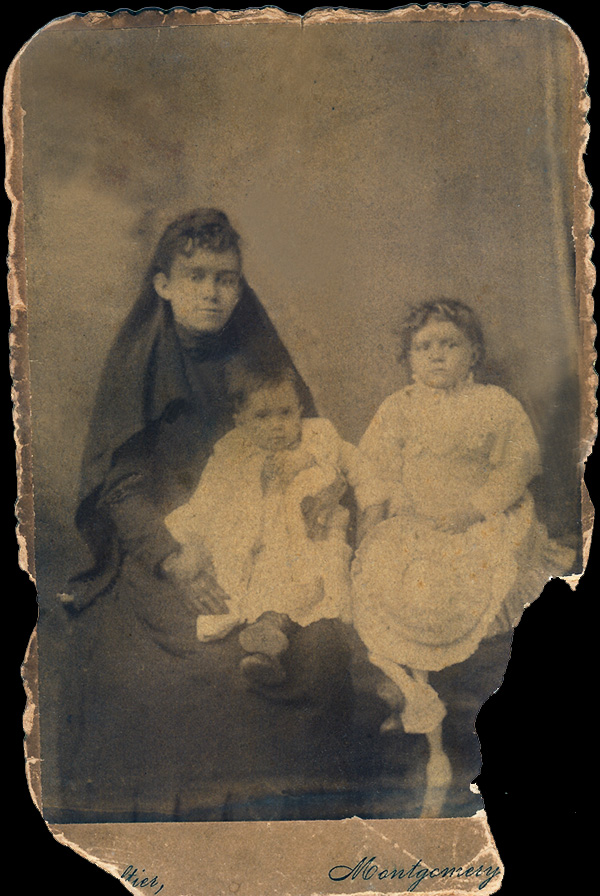
Howard Turner and Jennie Virginia Allen were married in June of 1887. Howard’s father, Joe Turner gave them land to farm in Lowndes County, Alabama. Joe wanted the land to stay in the family forever. By 1892 Joe and Howard were arguing constantly about Howard and Jennie’s desire to sell the land and move to Montgomery. The day of the fateful bar-b-que the arguments had been particularly violent. Jennie was in Montgomery visiting her parents , with their two young daughters, when word came that Howard had been shot dead at the bar-b-que.
Jennie moved back to her parent’s house with her children, Fannie and Daisy. She took the title to the land to a lawyer and asked him to make sure all was in order so she could sell. When she returned the lawyer told her that the title was not clear and she didn’t own the land. Jennie believed that her father-in-law had paid the lawyer to get the land back for himself. She cut ties with the Turners and went to work as a seamstress, the trade her mother Eliza had taught all six of her daughters.
Many years later, when Fannie was grown, she ran into one of her Turner cousins. She asked the cousin about what her mother believed – that Joe Turner had his son killed to keep the land. It wasn’t true. The lawyer had stolen the land for himself. They didn’t know who killed Howard.
Fannie was my maternal grandmother. Howard and Jennie were my great grandparents. Joe Turner was my great great grandfather. I didn’t know his or wife’s name, nor any of Howard’s siblings names until I found them in the 1870 and 1880 census in Lowndes County, Alabama when I began to do online research in the 1990s. Joe and Emma Turner lived on the farm with their children, Lydia b. 1862, Howard b. 1863, Fanny b. 1864, Joe b. 1867, Anna b. 1869, Alonza b. 1873.
